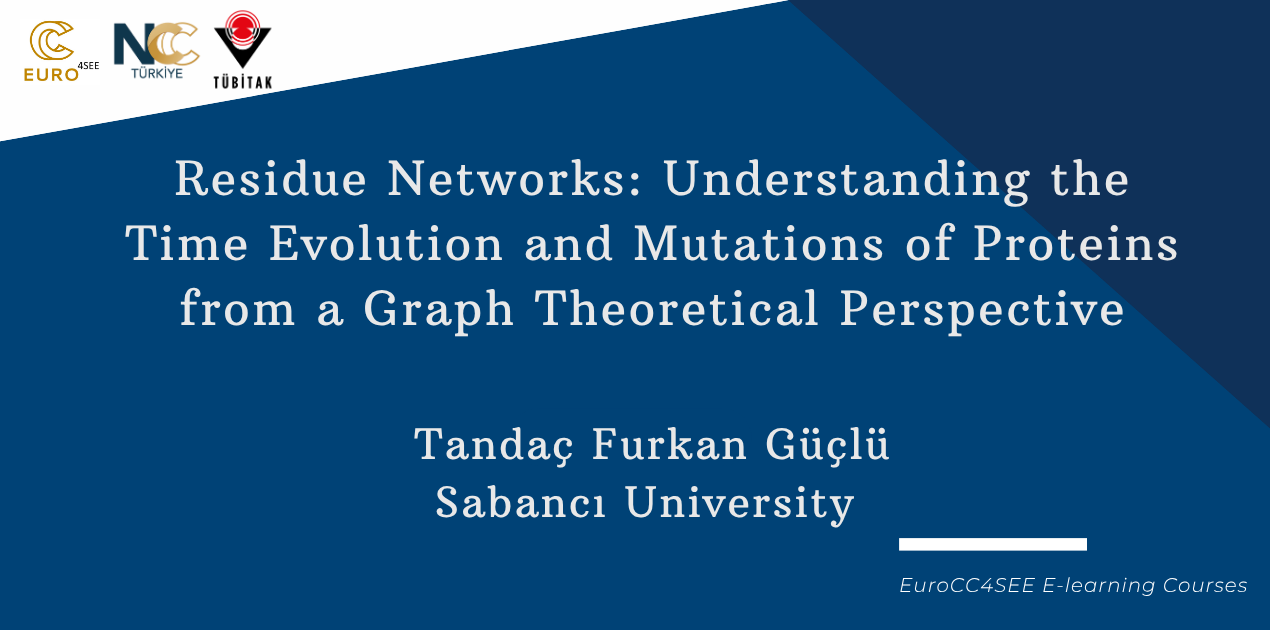
Residue Networks: Understanding the Time Evolution and Mutations of Proteins from a Graph Theoretical Perspective
Skill Level: Advanced
Language: English
Workload: 2 hours total
Topic: Computational structural biology
Overview:
Lesson 1: Introduction to graphs and measures
Lesson 2: Proteins as graphs and residue networks
Lesson 3: Time evolution of residue networks and communities
Course Description: This online course introduces fundamental graph theory concepts and key network measures such as nodes, edges, degree and centrality before covering the construction of dynamic residue networks from molecular dynamics simulations. Participants learn to compute node and edge betweenness centrality for identifying critical amino acids and interactions, apply the Girvan–Newman algorithm to detect residue communities and track how their composition evolves as proteins undergo conformational changes. Insights from centrality and community dynamics illuminate ligand binding and mutation effects in protein complexes. Hands-on exercises leverage Python with ProDy, NetworkX, NumPy and VMD for visualization and analysis.
Course Contents:
Lesson 1: Investigation of a Toy Graph: Measures and Practical Analysis in Python
Lesson 2: Visual Exploration of a Protein Structure and Conversion to a Residue Network
Lesson 3: Analysis of a Protein Molecular Dynamics Simulation Using Graph Theory, Emphasizing Community Analysis
Who Should Enroll: Individuals interested in learning graph theory and protein dynamics.
Prerequisites:
Completion of the “Molecular Dynamics Simulations of Small Molecules” course
Basic knowledge of protein structure and molecular dynamics simulations
Intermediate proficiency in Python programming
Tools, libraries, frameworks used: Python, VAMD, NAMD
Learning Objectives
By the end of this course, participants can:
Explain fundamental graph theory concepts, including nodes, edges, degree and centrality
Construct residue networks from protein structures and MD trajectories
Calculate node and edge betweenness centrality to identify key residues and interactions
Apply the Girvan–Newman algorithm to detect and interpret residue communities
Track changes in network measures and community composition over the course of an MD simulation
Relate centrality and community dynamics to ligand binding and mutational effects in protein complexes
About the instructor(s): https://tfguclu.github.io/
